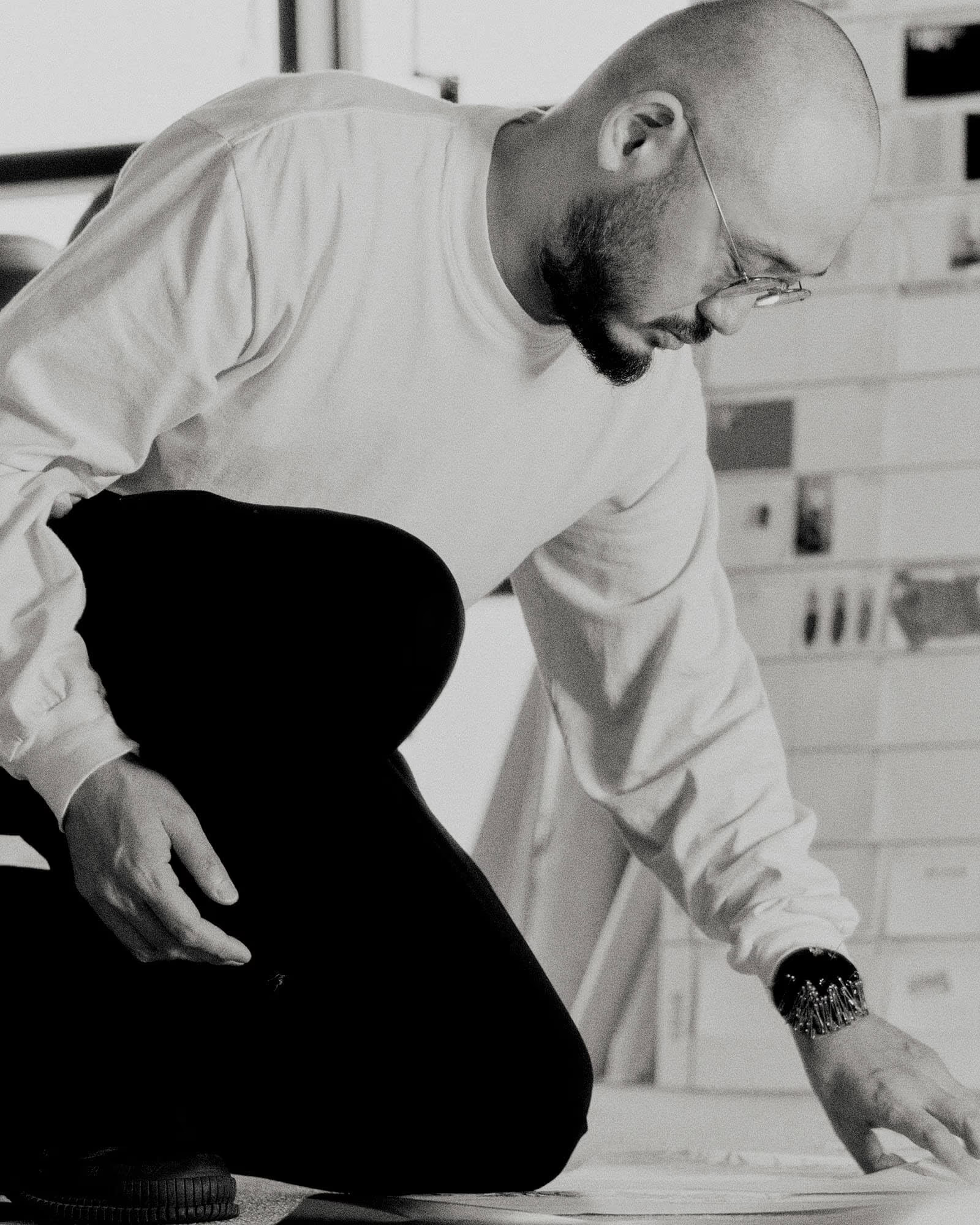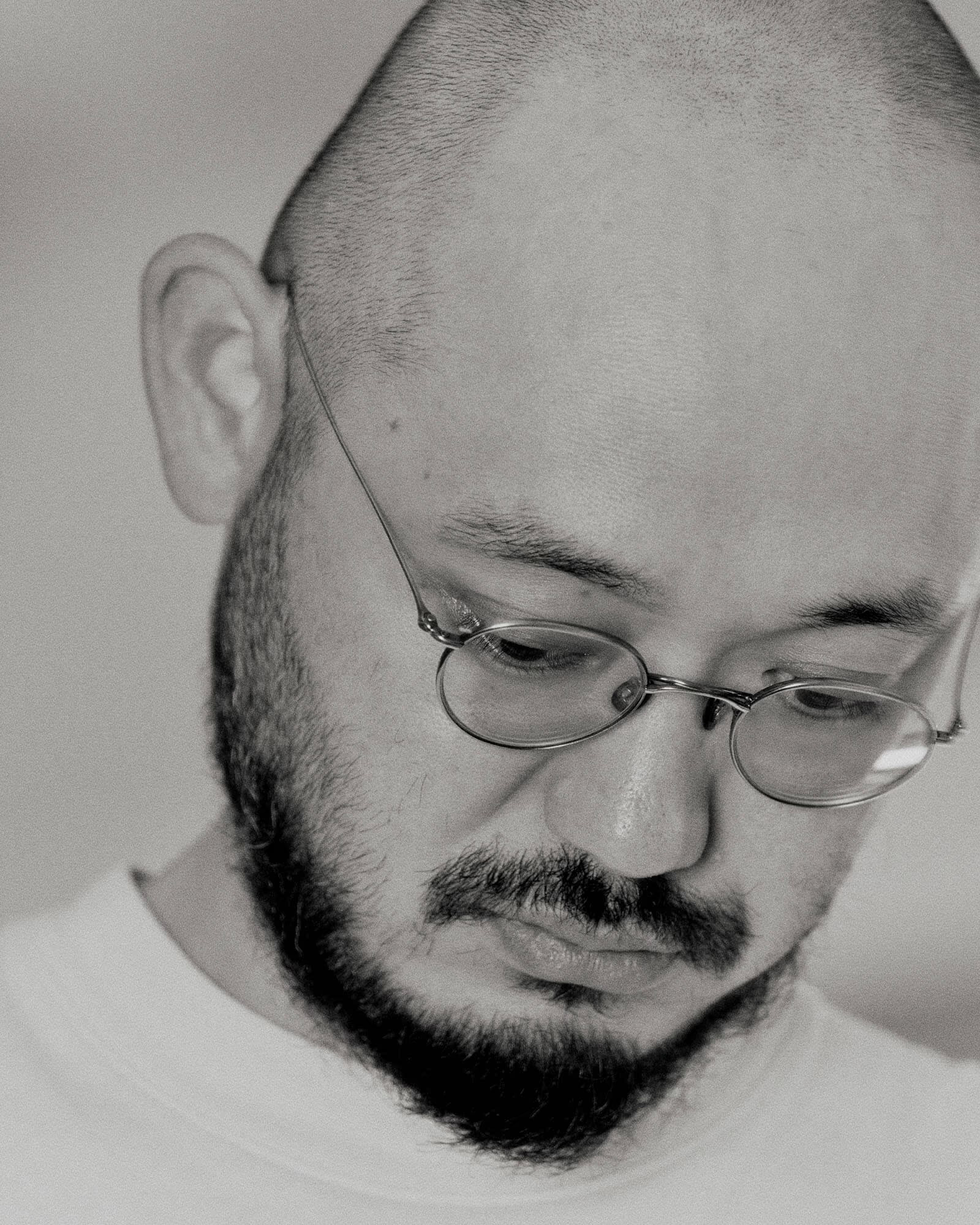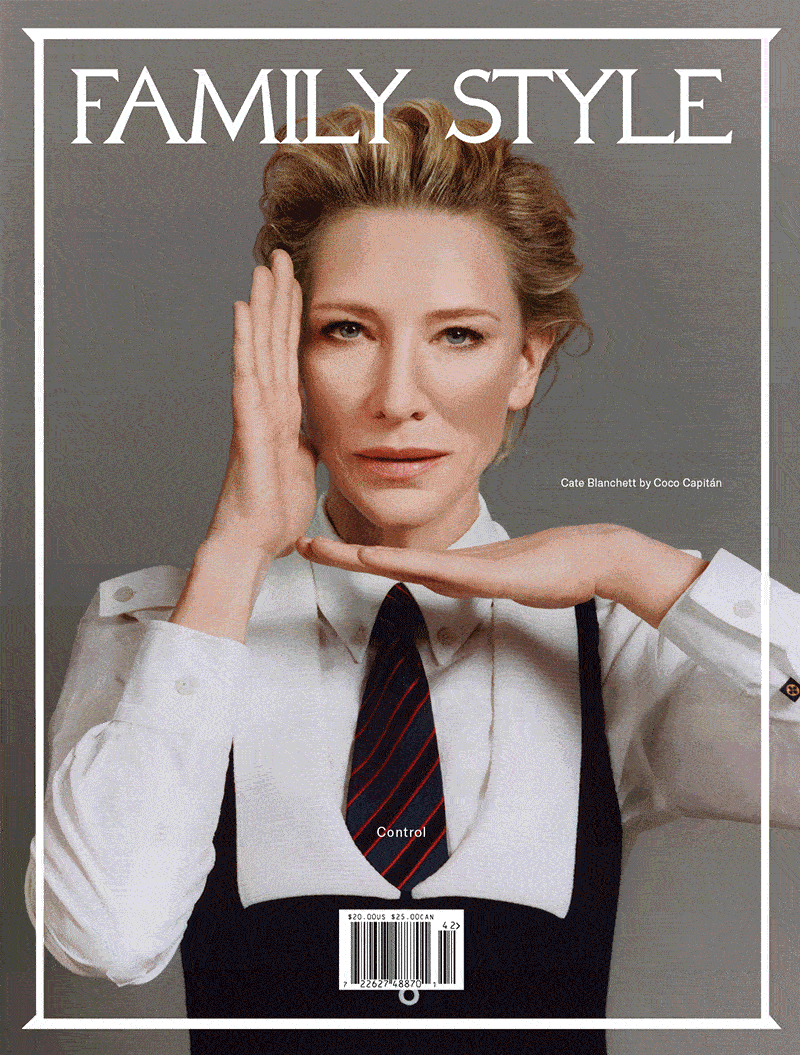“I am the type of designer who enjoys making things,” Satoshi Kondo says thoughtfully yet lightly through a translator on Zoom. Since 2019, he has been the head designer of Issey Miyake and creative heir to its eponym, the tireless innovator who invariably referred to his own work as making things. There is something refreshing in avoiding the pseudo-intellectualism that’s so prevalent nowadays in favor of a hands-on approach: a focus on things rather than on communication.
After all, true innovation—in the applied arts and within fashion in particular—can only spring from technique. And innovation is a Miyake pillar. “Being original is fundamental. We were taught to do things that have never been done before,” Kondo continues. “It is a constant creative quest for me and a way to express myself.”
Born in 1984 in Kyoto, Japan to a pattern-cutter mother, Kondo joined Issey Miyake Inc. in 2007 upon graduation from Ueda College of Fashion to work on Pleats Please and later on Homme Plissé, before finally reaching his current position in 2019. Despite his ample time working intensely alongside its founder, Kondo doesn’t show signs of a pavid or blindly reverential attitude towards Issey-san, whose imposing stature has slowed down Kondo’s predecessors in the past. This paradoxically explains why Kondo’s vision is both attuned to the brand’s ethos—his closeness in creative temper to Issey is evident—and utterly personal at the same time, free to take whatever direction he feels like.
Symbolically speaking, the only way to truly evolve is to kill the father figure—and that’s exactly what Kondo has done, in the gentlest yet boldest of ways. His understanding of Miyake’s founding values is as crucial as his freedom in interpreting them, as shown by his Fall/Winter 2024 Ready-to-Wear collection, which delivers a decisive statement rather than merely reiterating the house’s codes.
In this rather captivating, deeply emotional effort, Kondo reflects on how a single piece of cloth (a Miyake must) explores the radical intention at the core of wrapping oneself in fabric. The resulting dresses are imbued with a raw, metaphysical and nomadic quality: They coil and fall around the body, float in space, sprout sleeves from ankles to arm, as if the garment has agency rather than the wearer. The impression is one, simultaneously, of futurism and primitivism. “Fashion allows me the privilege to travel in time, but I always look ahead,” Kondo concludes. Through a translator, the designer sounds more imperative than he probably is; the unfilled gaps between English and Japanese leave a lot to the imagination.
An unfilled space is one ripe with meaning: The notion is called Ma in Japanese, and Kondo often refers to it when relating a dress to the body. It is a pause, or a void that allows forms to unfold in their entirety. The fashion designer masters Ma like no other, which is what makes his work so deeply human, so moving.











.avif)

